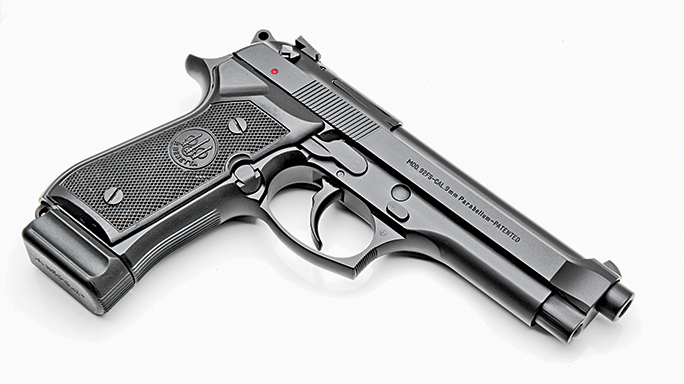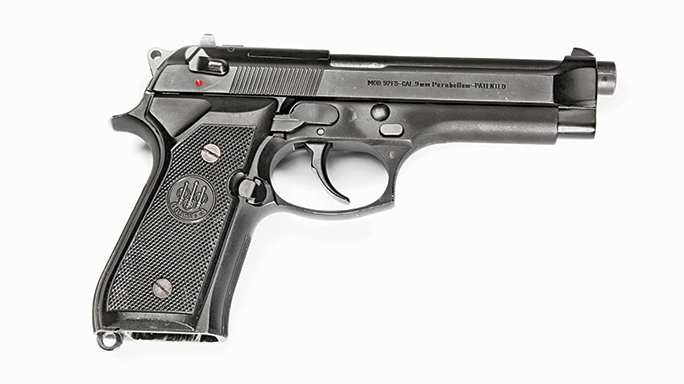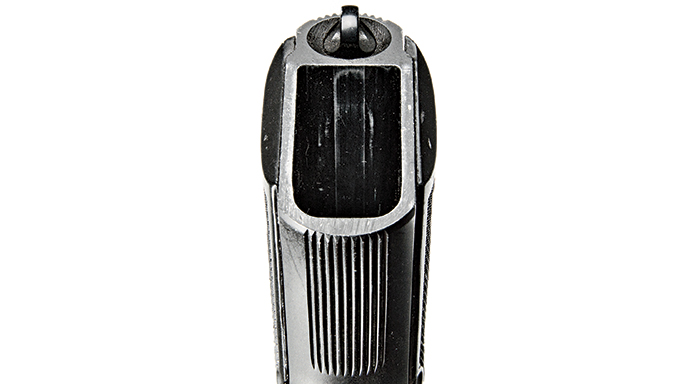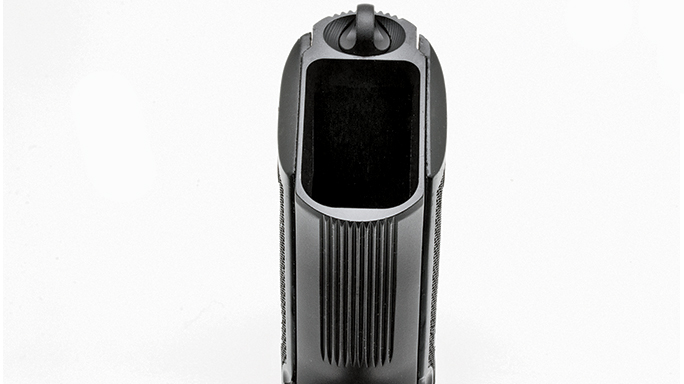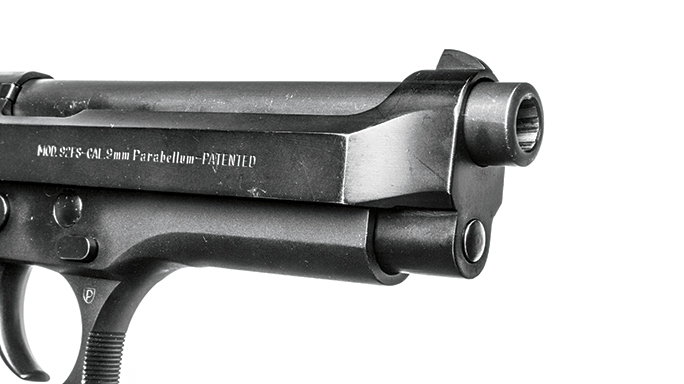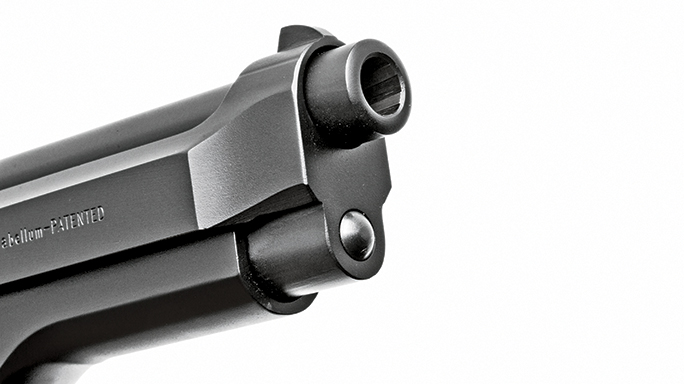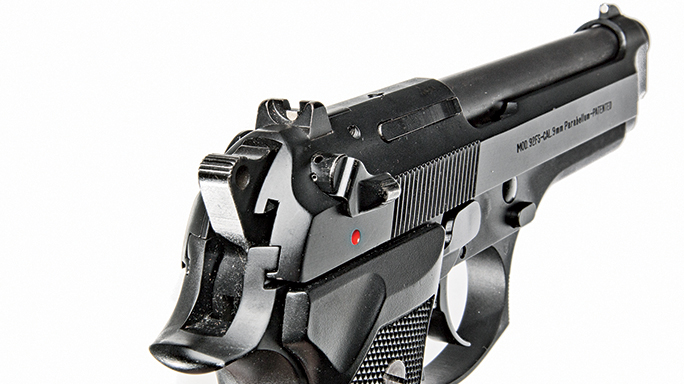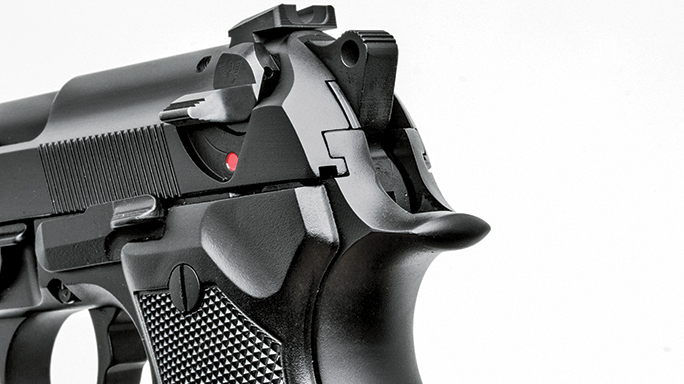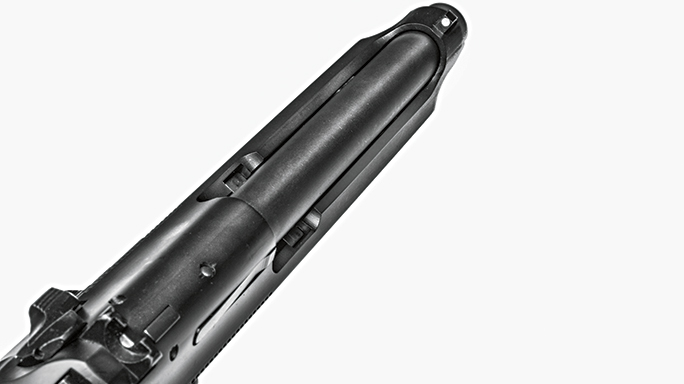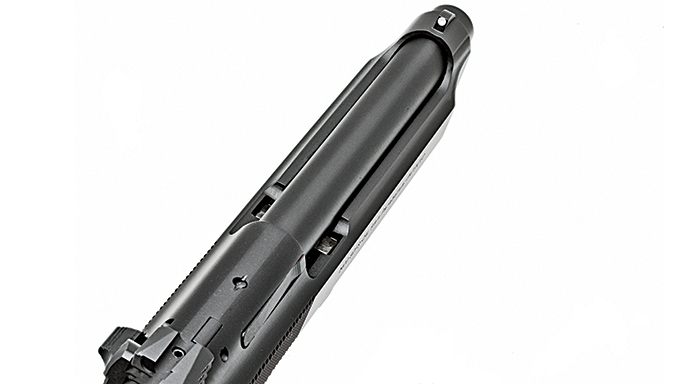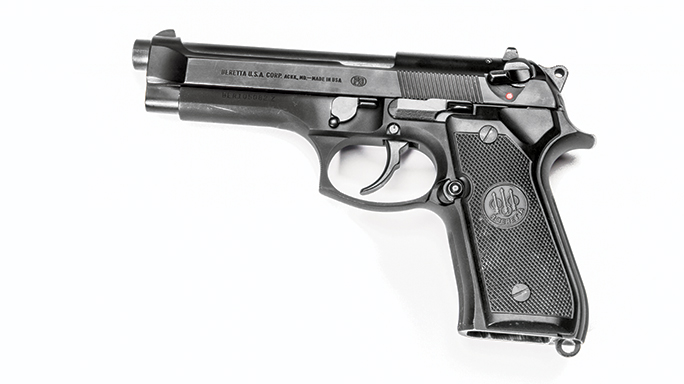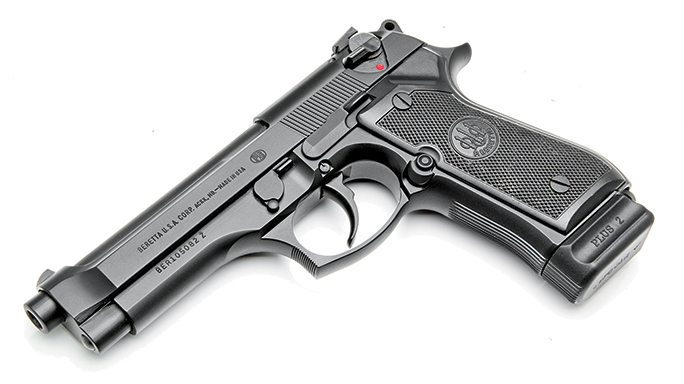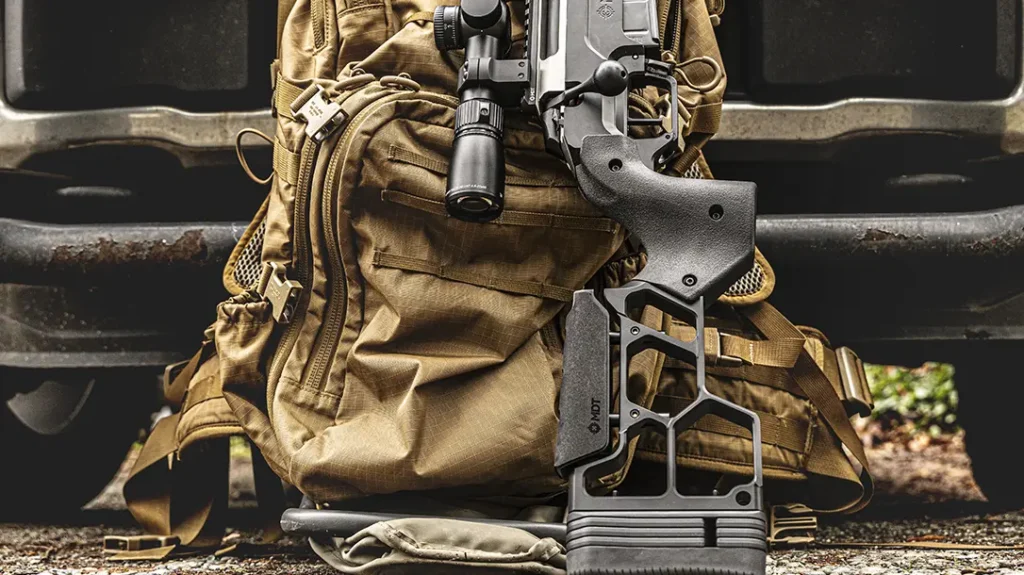Ronald Rimmer was a gangly 20-year-old in 1983 when he arrived at the yellow footprints familiar to thousands at the Marines Corps Recruit Depot at Parris Island, South Carolina. His six-foot, five-inch frame made him stick out amongst his classmates, which wasn’t necessarily a good thing as a recruit. But like thousands before and since, Rimmer completed his basic training and went on to become an Air Naval Gunfire Liaison Company (ANGLICO) Marine, serving 15 total years on active duty and in the reserves. Retiring as a gunnery sergeant, Rimmer’s career took him to Caribbean, Africa, the Mediterranean and Europe.
- RELATED STORY: Firearm Origins: A Look at the Iconic Beretta 92 Series
Shortly after his entry into the Marine Corps, the decision was made to switch the issued sidearm from the venerated Colt 1911A1 to the Beretta 92F (M9). While the rationale was exhaustively debated across the military, newly minted recruits fight with what they are issued, and so began a career of service between Rimmer and the Beretta 92F. The mythical days of American warriors returning to their civilian life with the actual firearms they carried during their service are over, if they ever existed. But like many professional-minded Marines, Rimmer purchased a Beretta 92FS nearly identical to his USMC-issued pistol more than 20 years ago, for personal protection and to maintain and improve his skills.
As such, this particular Beretta had been with Rimmer for a long time, and it was no small gesture for him to hand it over to Wilson Combat to change what had become a familiar and trusted companion. “I was apprehensive about sending it off, not to mention not having it, and it potentially coming back changed in a way that made it less than it left. It was like sending a kid off to college,” said Rimmer.
Advertisement — Continue Reading Below
Classic & Modern
Like most Marines, Rimmer appreciates tradition and was not inclined to substantially change the overall look of the weapon. In a letter to Bill Wilson, the founder of Wilson Combat, he wrote, “I am guessing the Custom Carry Package for the 92FS would be the best option—but keeping the look of the pistol black, as it was when I carried it in the Fleet, would be my preference.” So the order was sent to keep Rimmer’s Beretta as true to its issued appearance while upgrading or tuning existing parts. This meant keeping the original grips, front- and backstrap serrations, lanyard loop and magazine release button, but many other changes were to come.
The first step was to update and refinish the pistol’s external surfaces and safety. This involved stripping the whole gun and then adding the beveled magazine-well cut and G-series safety conversion. For this conversion, the Wilson Combat team removed the stock safety and added the company’s own G-series safety/decocker. This step eliminated the safety lever from the right side of the slide, which can catch while the pistol is carried, and the new left-side lever has a lower profile. The modification also included a new plunger and spring supporting the lever. Next, the Wilson Combat team prepped and dehorned all of the external surfaces for concealed carry and made slightly deeper cuts in the factory serrations.
Advertisement — Continue Reading Below
The pistol was then bagged and sent to have the entire exterior of the pistol finished with Wilson Combat’s Armor-Tuff in the original black color. More than a paint, the Armor-Tuff finish comes after a fine media sand blasting of the frame, slide and external metal parts. Unlike the original bluing, Wilson Combat’s Armor-Tuff finish is thermally cured to be resistant to water, salt, chemicals and abrasion.
When it returned to the gunsmithing bench, the tuning began. This involved polishing the internal contact surfaces of the parts inside the frame. It also included polishing the hammer and sear as well as checking and, if necessary, replacing the factory springs. Particular attention was given to both the single- and double-action trigger pulls to make certain that they were both smooth and consistent. The tuned double-action trigger pull typically weighs between 5 and 7 pounds, while the single-action pull is between 3 and 4 pounds, but Wilson’s focus is on smoothness.
As for the rest of the frame, Rimmer’s order did not include changing the original black grips, but the Wilson Combat team beveled the mag well to improve the speed and ease of magazine changes.
Advertisement — Continue Reading Below
The next step was to replace a number of the original parts with those that had been improved over the past two decades of service. Wilson Combat replaced the stock polymer guide rod with its own fluted steel guide rod. This 4140 heat-treated, Melonite-finished steel guide rod features flutes that hold lubrication and trap dirt, ensuring smoother and more consistent spring travel.
Wilson also replaced the existing recoil spring with a 13-pound chrome-silicon spring, giving the Beretta’s action some refreshed power and enhanced spring life. The final part change was an improved rear sight. The original 92FS had the government-issued white-dot rear sight with a square notch. The surface around the rear dot is smooth, and the shooter’s eye must align a square with a circle. On the Wilson Combat replacement, however, the rounded notch matches instantly with the round front sight, and horizontal serrations on both sides reduce glare.
Return Trip
Advertisement — Continue Reading Below
Rimmer’s fears quickly ebbed when the pistol arrived. “The finish is flawless,” Rimmer said. “It looks like it just came out of the shrink wrap. Most Marines don’t get brand-new weapons, so this was a positive change from what I was used to. Just the finest craftsmanship all around. The overall look is sharper and cleaner.”
But the real changes were most notable on the range. “Though this is the same pistol I had before, the performance is not anywhere close to the same. The action is super-smooth, and the trigger is consistent. Coming up on target with the DA/SA trigger is much improved. It’s a much smoother weapon than the one I sent to them.”
- RELATED STORY: Renowned Beretta 92 Series Gets Expansion For 2015
But the most unexpected surprise came from his wife. “The Beretta is a large pistol, and the manipulation of the weapon is not simple on the issued model. But with the smoother action, my wife now has a much easier and more enjoyable time practicing with it. She’s much more comfortable with it now than she once was,” Rimmer added.
Advertisement — Continue Reading Below
For More Information
- Beretta: Beretta.com
- Wilson Combat: WilsonCombat.com; 800-955-4856
